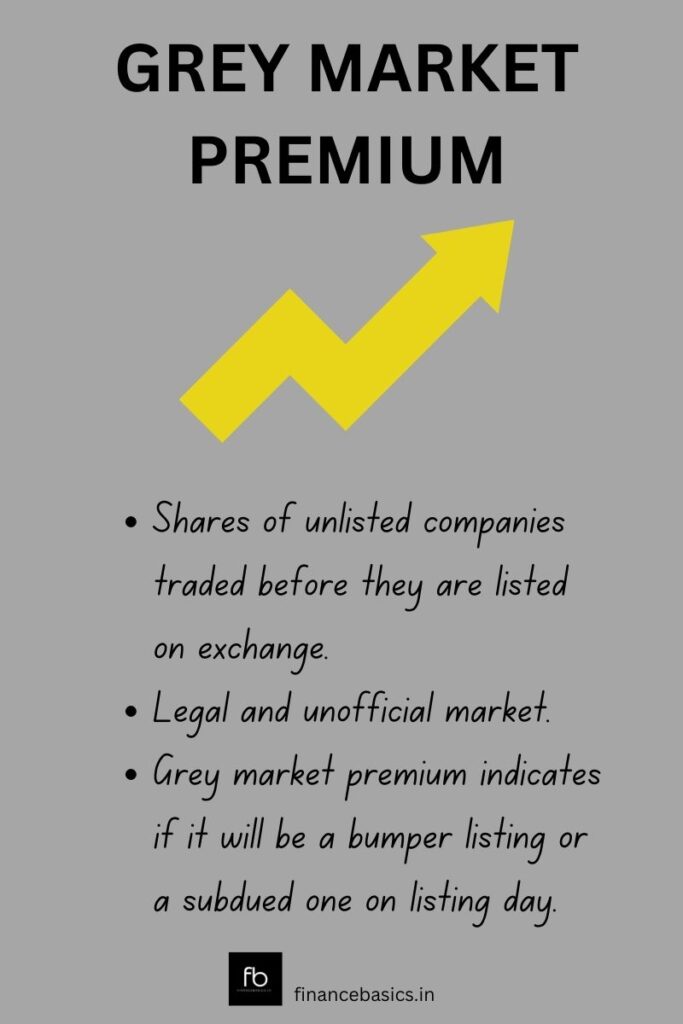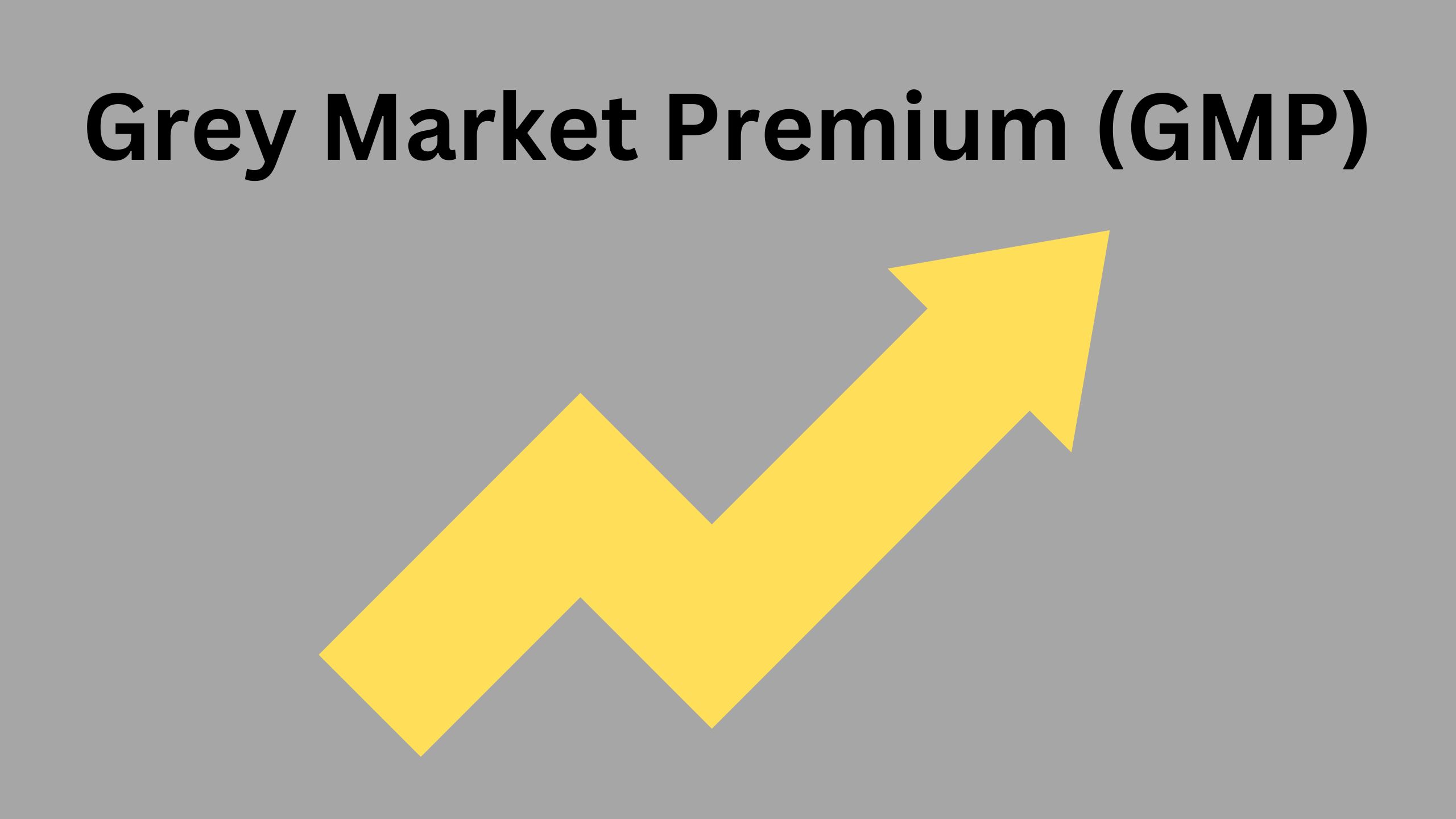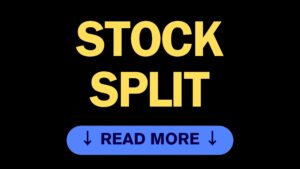Table of Contents
What is grey market in stocks?
Grey market is a market where shares of unlisted companies are traded before their listing on the stock exchange. It is a legal and unofficial market where trading is done in cash and in person. It is not regulated and works on trust between the individuals. In a grey market, even if a trade is binding it cannot be settled until official trading begins. Trading in grey market is of two types – trading IPO shares before these get listed on the stock exchange and trading IPO applications at a particular rate. The rate at which full IPO applications are sold in the grey market is called Kostak rate. The Kostak rate depends on allotment of shares.
How does grey market work?
I. Trading IPO shares in the grey market –
- Investors apply for shares via IPO. They take a financial risk as they may not get allocated any share or they receive the shares but shares may list below the issue price. These are referred to as sellers.
- Few individuals who think that the share values more than its issue price. They start collecting these shares even before they are allocated through the IPO allotment process. These are referred to as buyers.
- Buyers place the order to buy IPO shares at a certain premium by contacting the grey market dealers.
- Next, the dealer contacts the sellers who applied in the IPO and ask them if they are willing to sell their IPO shares at a certain premium at this time.
- Meanwhile, if the sellers are not willing to take risk of stock market listing and like the premium, they may sell the IPO shares to the grey market dealer and book the profit. However, the seller has to finalize the deal with the grey market dealer at a certain price.
- The dealer gets the application detail from the seller and sends a notification to the buyer that he bought a certain number of shares from the sellers in the grey market.
- The allotment is done and sellers may or may not receive an allotment of shares.
- If shares are allocated to the investor, he may either get a call from the dealer to sell them at a certain price or transfer allocated shares to some Demat account.
- If the investor is selling the shares, the settlement is done depending on the profit or loss and the grey market premium at which buyers and sellers made a deal.
- In case if no shares are allocated to the sellers the deal gets cancelled without any settlement.
II. Trading IPO applications in grey market
- Similar to IPO shares trading, even IPO applications include sellers and buyers.
- Buyers determine the price of the application depending on multiple assumptions and market conditions. They give an offer to the sellers that they are willing to buy an IPO Application at a certain premium.
- To be on the safe side, sellers may sell their application at a certain premium to the buyer through a grey market dealer.
- Here, there is no need for the seller to worry about the share allotment in IPO. Even if he didn’t get any allotment he still gets the grey market premium at which he sold his IPO allocation.
- The seller sends the detailed form to the dealer. Further, the dealer sends a notification to the buyer that he bought an IPO application at a certain premium from the sellers in the grey market.
- The allotment is done by the issuing registrar. The application seller sold may or may not receive an allotment of shares.
- If shares are allocated to the sold application, either seller may get a call from the dealer to transfer allocated shares to some Demat account or sell them at a certain price.
- In the case of selling the shares, the settlement is done based on the profit or loss.
- If there are no shares allocated to the sellers, the deal is said to be over without any settlement. However, the seller still gets his premium as he sold his application.

What is Grey Market Premium?
The amount at which the IPO shares of the company are traded in the grey market before the listing is called grey market premium. The company’s stock that will come up with the IPO is bought and sold outside the stock market. The live grey market premium reflects how the IPO will react on its listing day.
Let us understand the concept with an example. Suppose John Doe Ltd has filed for an IPO. The price band of the share in IPO is Rs 500. If the grey market premium is Rs 700, then the share price in the grey market is Rs 1,200. This means investors are ready to buy the share at Rs 1,200 (500+700). The grey market premium depends on the demand for the IPO. Generally grey market premium reflects how the share price will move on the listing day.
How is grey market premium calculated?
Grey market premium is determined on basis of demand for the share and the valuation. If the demand is high the grey market premium is also high and vice versa. A higher grey market premium suggests that the stock may get listed above its issue price. Similarly, a negative grey market premium suggests that the stock may be listed below its issue price or at a discount.
These days, investors look at the grey market premium along with the red herring prospectus and analyst recommendations before they apply for an IPO. Grey market premium is a key metric to assess if an unlisted stock can provide gains on the listing day.



